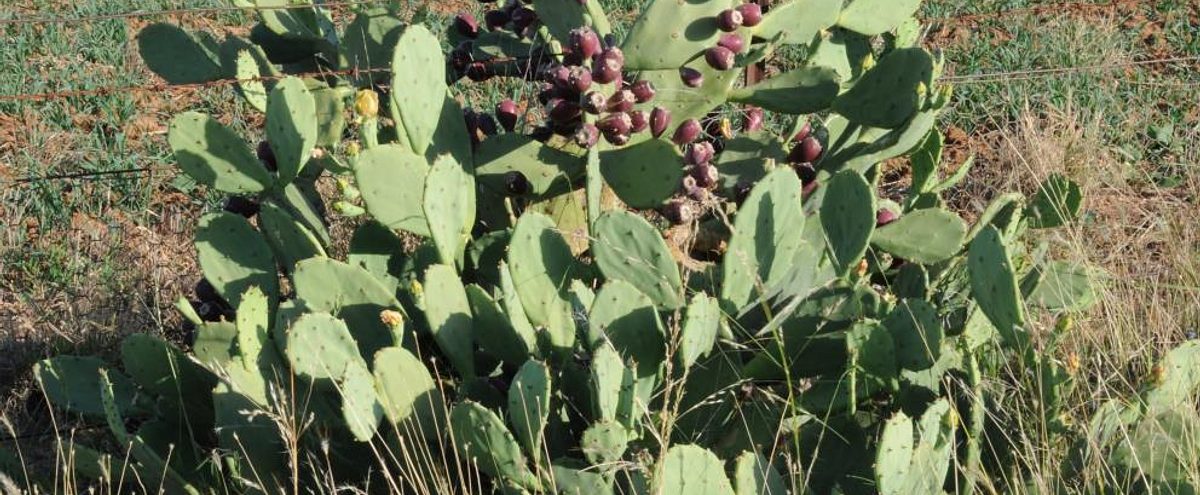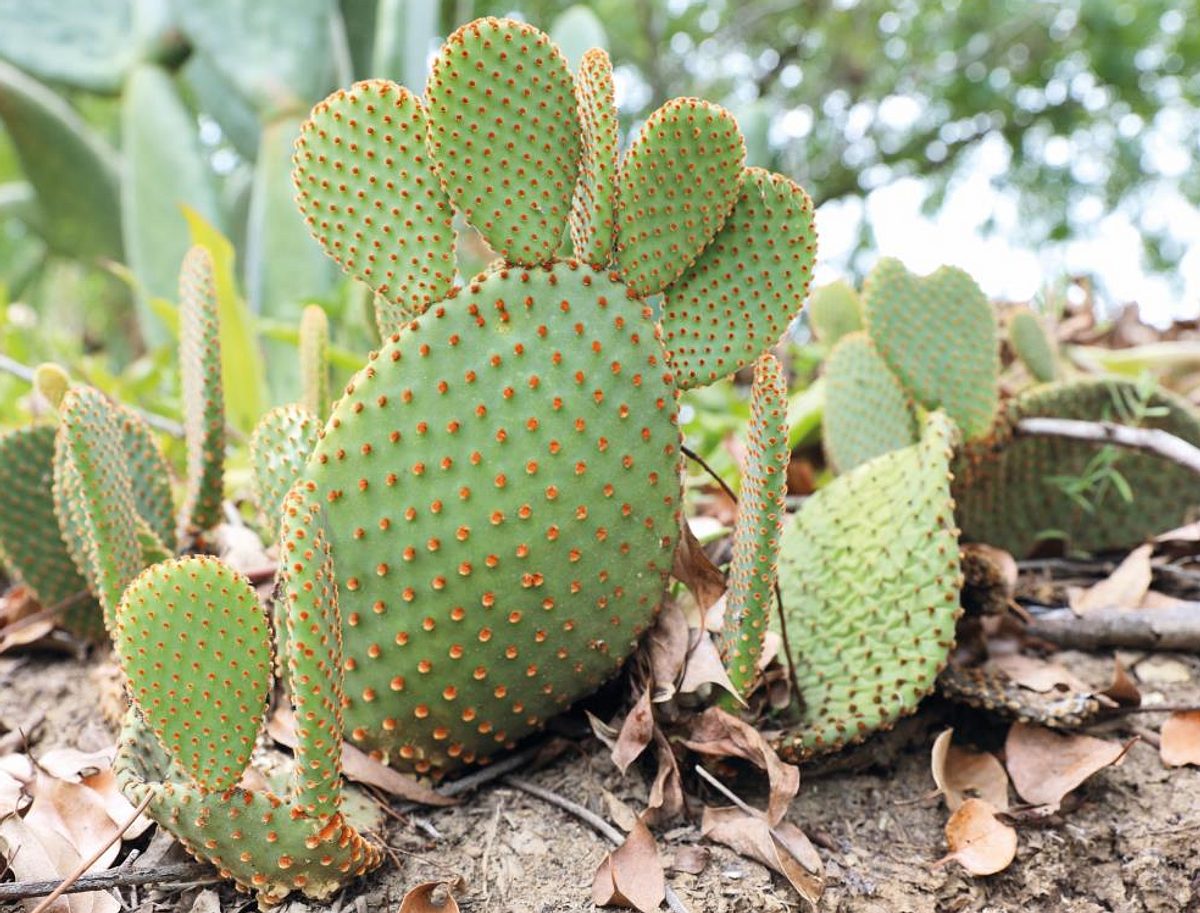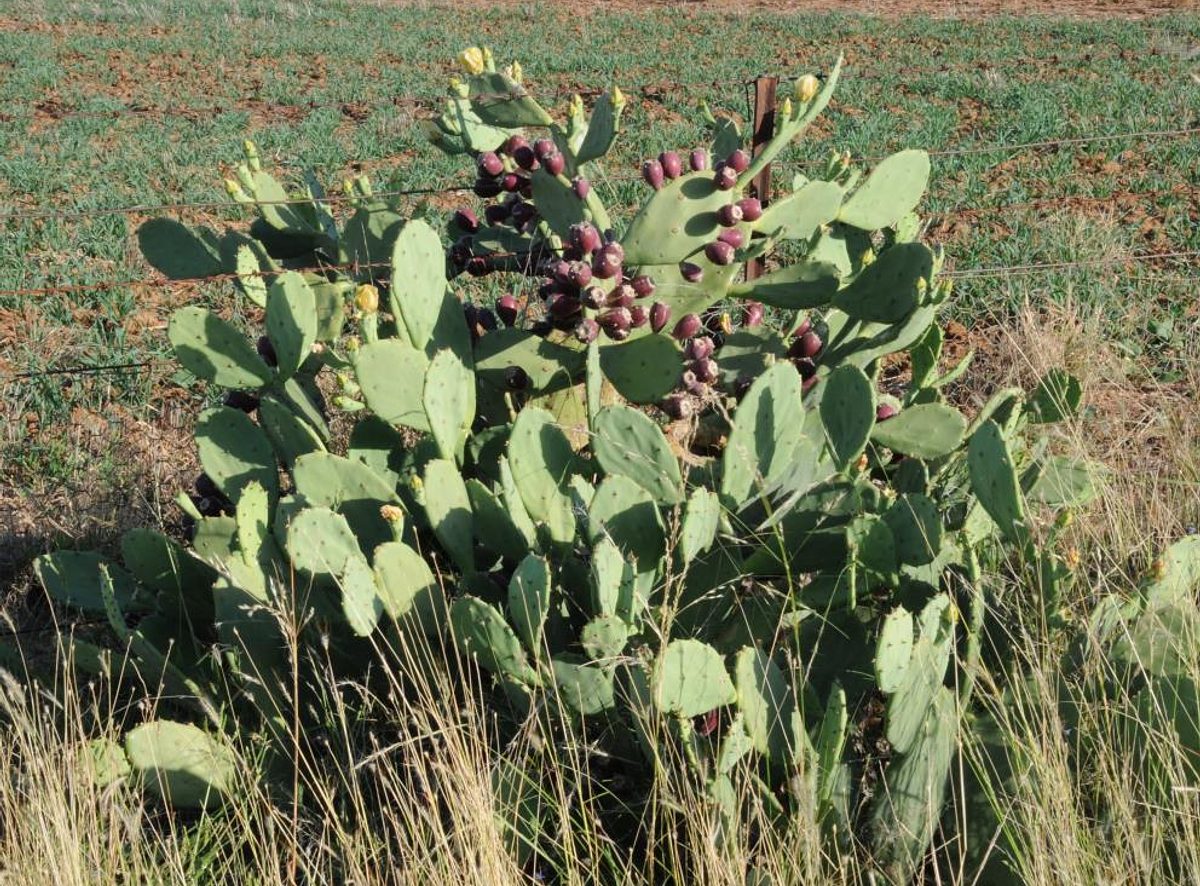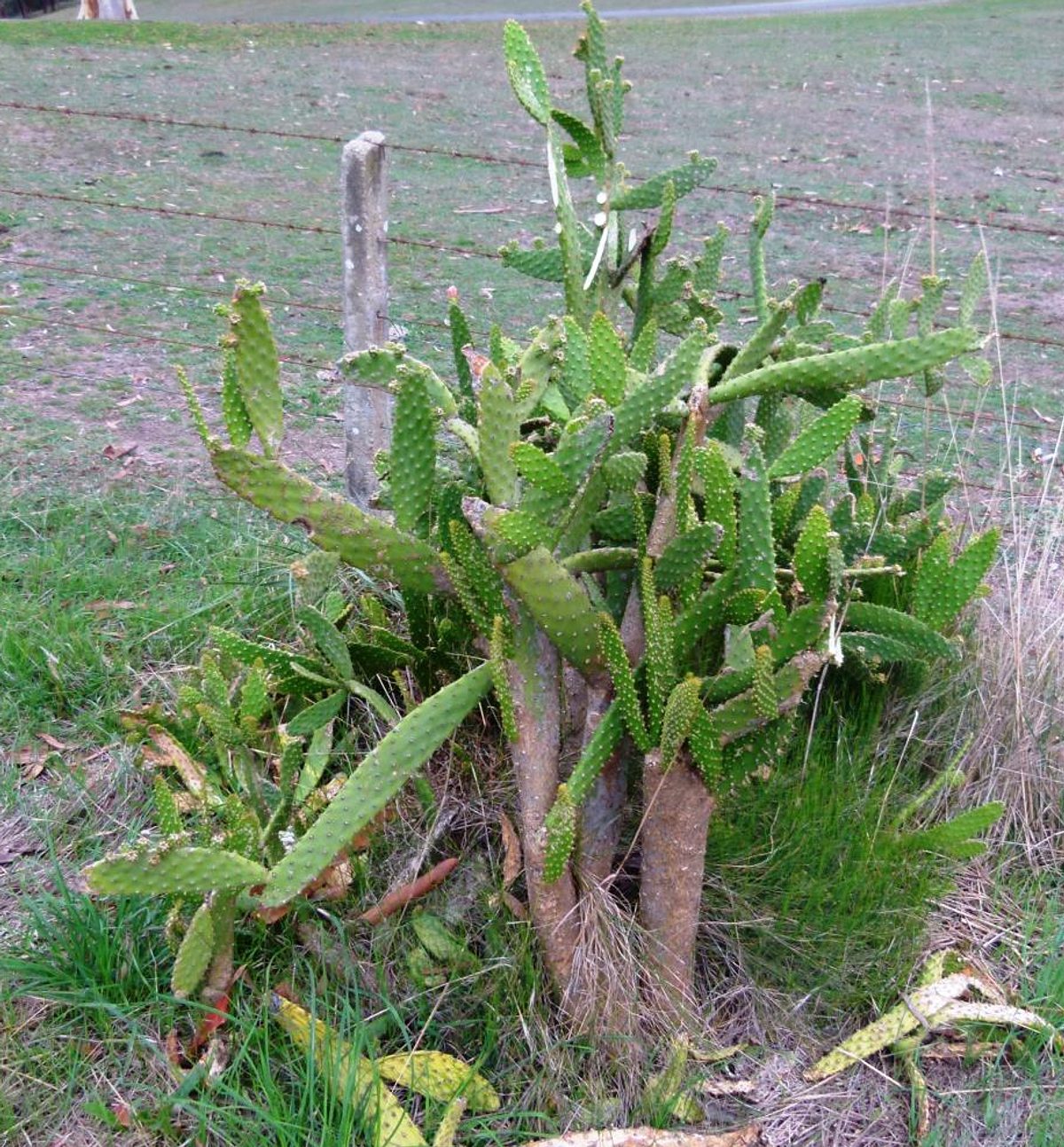
Opuntia cactus (wheel cactus)

Opuntia cacti are characterised by their round, pad-like leaves and include commonly known species such as prickly pear and wheel cactus. All Opuntia species are declared in South Australia, with the exception of Indian fig which is grown for its edible fruit.
What are Opuntia cacti?
Opuntia cacti are perennial succulents characterised by thick, pad-like leaves with rounded edges and prickly spines. Most Opuntia species produce flowers, ranging from yellow, red, orange, purple and white in colour. All species produce fleshy fruit which attach to the pads and range in colours from pale green to deep red.

Opuntia infestations germinate easily as they can grow from both seeds and plant parts. Seeds and dislodged plant parts can travel significant distances via wind, through waterways and animals before establishing new incursions. Fruit and seeds are also spread by being ingested by birds and animals before being excreted.
Where are Opuntia cacti found?
In Australia, Opuntia species are found in sub-humid, semi-arid and arid areas in sub-tropical, warm and cool temperate regions. All Opuntia species are drought resistant and can grow in a variety of soil types. They can be found across the whole region, but species like tiger pear are predominantly found in isolated infestations in the Riverland. Wheel cactus and prickly pear are found in locations in both the Murraylands and Riverland.
Opuntia are found in grasslands, bushland, forest, native vegetation, on rocky slopes, beaches, roadsides, agricultural lands, railways, waterways and fence lines.
Recorded opuntia (wheel cactus) outbreaks in the Murraylands and Riverland region*
What are the impacts of Opuntia?
Opuntia invades rangelands, pastoral lands and open native vegetation, displacing and competing with desirable vegetation. Dense infestations obstruct the movement of livestock, humans and vehicles, and the spines can irritate the skin or cause injury to livestock and humans. The fruits of some species can harbor fruit fly, which is of particular concern in the Riverland.

What is the declared status of Opuntia species?
With the exception of Indian fig (Opuntia ficus-indica), all species of Opuntia are declared in South Australia and subject to the following restrictions:
- Land managers must take reasonable steps to kill plants and prevent their spread,
- Plants must not be sold or traded in any way, including as a contaminant of anything,
- Plants must not be transported on a public road, including as a contaminant of anything, and
- Plants must not be transported in the region without a permit.

How can Opuntia species be controlled?
Managing infestations of cacti can be hard because it spreads so easily from small plant parts. Successful weed control relies on follow-up after the initial efforts by looking for and killing regrowth or new plants. Using a combination of control methods is usually more successful. Land managers should ensure that they wear protective clothing, including gloves, boots, thick clothing, and eyewear to stop injuries from spines.
Visit the PIRSA website to find out chemical control options and dosing rates specific to Opuntia.
In some situations, manual removal may be an appropriate control option, but is only effective when all parts of the plant are removed and buried deeply.
There is also a biocontrol option which is effective in managing some Opuntia species. To see if this appropriate for incursions on your land and to access the biocontrol, contact a district officer at your local landscape office.
How can Opuntia infestations be prevented?
Land managers should also ensure that they take relevant preventative measures. Avoid growing opuntia in gardens or pots and don't take cuttings of unknown cactus plants to grow or share with others.
Check clothing, vehicles, and equipment for plant parts before leaving an area that has cacti. Use fences to keep livestock (and wildlife if possible) out of known cacti incursions.
When is the best time to monitor for and control Opuntia?
Opuntia are perennial and so are visible all year around and timing for control depends on the method used. Manual removal may be conducted at any time of year, whereas some chemical control methods require certain climatic conditions and are best when the plant is actively growing and so spring and summer are most suitable. Trials in the Murraylands and Riverland region have shown that biocontrol released in autumn is most likely to take to the host plant, and therefore be more effective in control.

What to do if you suspect an Opuntia outbreak
Notify the Murraylands and Riverland Landscape Board if assistance is required. If the plants are actively growing on your land, remove and destroy the plant or treat with a relevant herbicide until the plants are killed.


This project is supported by the Murraylands and Riverland Landscape Board with funding through the landscape levies.
*Map provided as a guide only. Mapped outbreaks are not necessarily current or comprehensive.